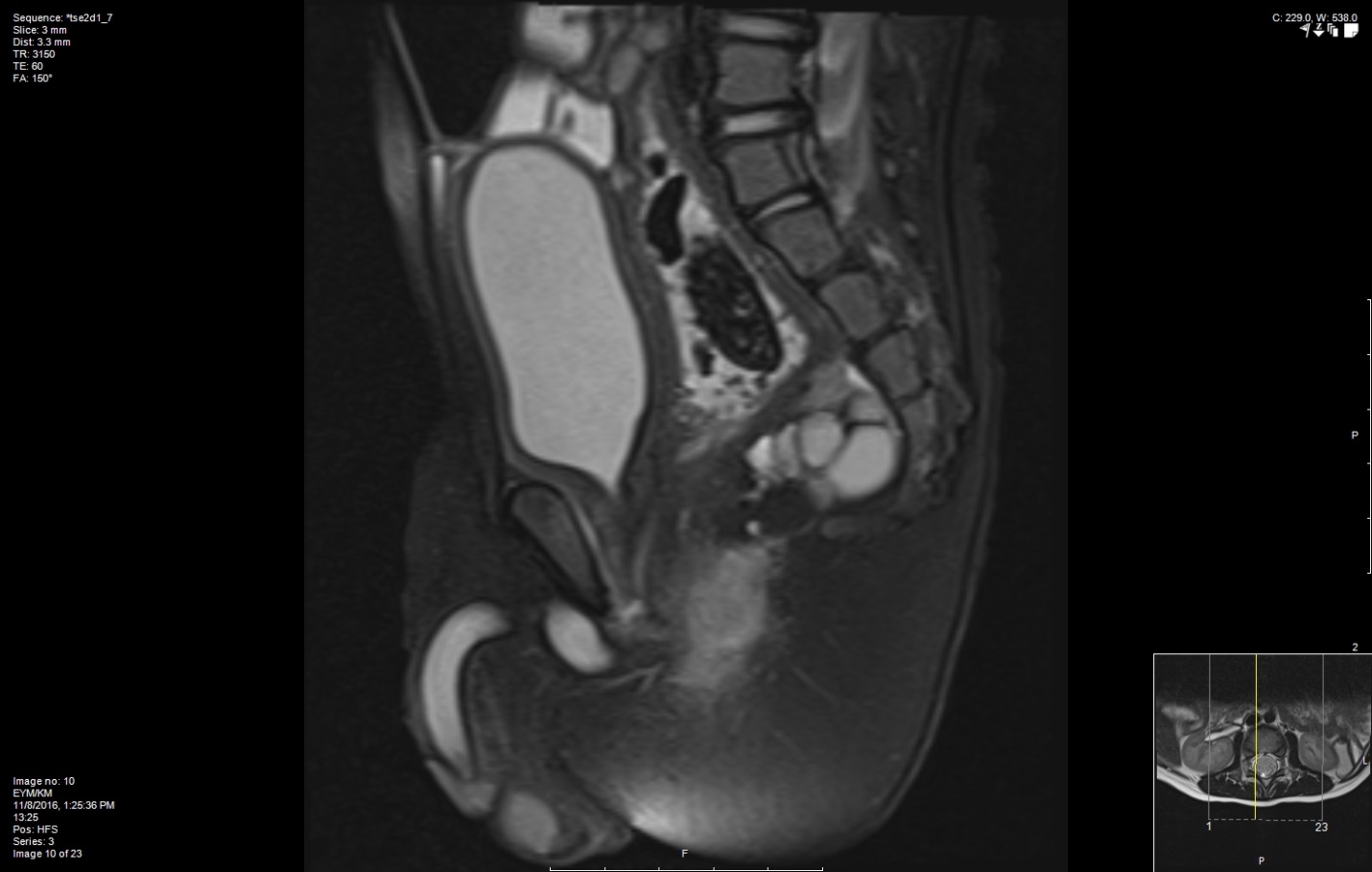Case Presentation: 21 month old male presents to the hospital for constipation that failed outpatient therapy. Parents describe one hard difficult to pass bowel movement (BM) every other day, without pencil thin stools, blood or mucus. Constipation began at 3 months of age when they introduced formula. He passed meconium within the 24 hours of birth and was growing and developing normally. Parents tried lactose free formula, laxatives and fruit juice with minimal imporvement. He had two prior hospitalizations for constipation requiring manual disimpaction. He was admitted to our facility for further workup. There was no family history of constipation, Cystic Fibrosis, Hirschprung’s Disease or Hypothyroidism. On Physical exam the patient was alert, active and in no acute distress, cardiopulmonary exam was within normal limits, the abdomen was distended but non-tender to palpation, stool burden was palpable and bowel sounds were present. Rectal exam was deferred until the patient was sedated. The next day he was taken to the operating room for a digital disimpaction under anesthesia and was noted to have increased anal tone with a funneled rectum, a rectal manometry confirmed that he had an anal fistula and surgery was consulted. Pelvic Magnetic Resonance Imaging (MRI) was obtained which showed a presacral teratoma (image1), spinal X-ray and MRI where within normal limits. He was diagnosed with Currarrino Syndrome (CS) and corrective surgery was scheduled. To this date he has undergone corrective surgery including resection of presacral mass with diverting colostomy, anorrectoplasty, multiple dilations and colostomy takedown, he continues to require rectal dilations. The presacral mass was determined to be a benign mature teratoma by pathology and a rectal biopsy was negative for Hirschprungs disease.
Discussion: Currarino syndrome is a rare complex syndrome characterized by a sacral bone defect, anorectal malformation, and a presacral tumor. Although complete triad presentation is rare. The most common presenting symptom is constipation but most cases are asymptomatic and diagnosed incidentally. In a multicenter retrospective data collection study they found that almost half of the patients had been diagnosed with CS after 1 year of age and only 23.5% by the first month of life. The diagnostic approach is imaging based and should include radiographs and pelvic and spinal MRI for evaluation of presacral masses and spinal anomalies. In our case the radiographs and spinal MRI did not show skeletal abnormalities but the pelvic MRI did show a presacral mass. Management is surgical and should be tailored to each individual case as in our patient who required a step-wise surgical approach.
Conclusions: Currarino syndrome is a difficult diagnosis due to it’s rarity and variable presentation, however it should be suspected in cases of intractable constipation especially if there is significant family history or a physical exam suspicious for anorrectal malformation. Imaging should include a sacrum radiograph to detect sacral defects and a pelvic and spinal MRI to evaluate for presacral masses and other intraspinal anomalies. The diagnosis and management of CS is multidisciplinary and must include pediatric surgeons, neurosurgeons, radiologists and pathologists. In the end the mainstay of treatment is surgery.

